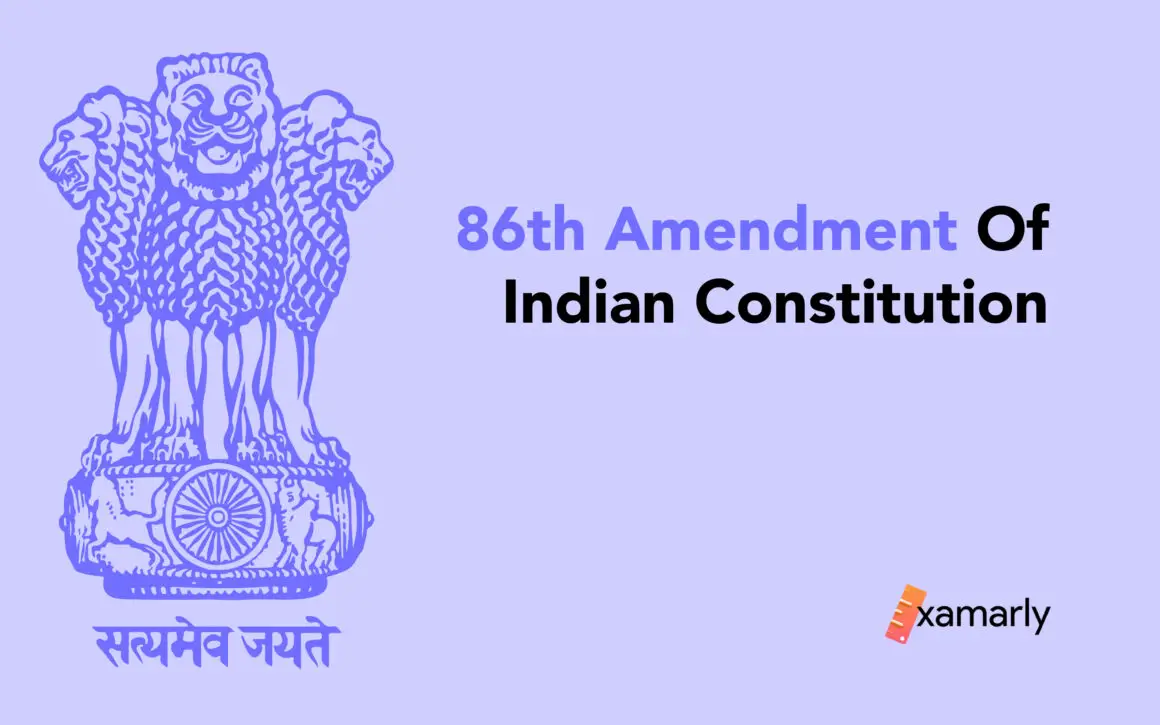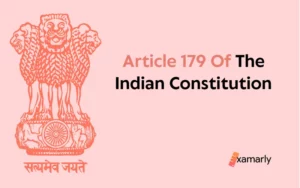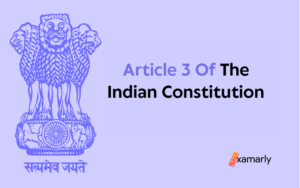The 86th amendment of Indian constitution was introduced in the parliament in December 2002.The primary motive behind this amendment was to provide opportunities for education to all classes of people. It made elementary education a fundamental right for children aged 6-14 years.
Salient Features And Facts
- Providing free elementary education to children aged 6-14 years was put forth in the Directive Principles of State Policy (DPSP) under Article 45. The Indian Government was expected to fulfill and achieve this within ten years of the commencement of the constitution. At the time of the introduction of the 86th amendment bill in the year 2002, more than thirty years had passed but access to education was still a distant dream for many.
- To achieve universalization of elementary education and to make rights of education a legal obligation, Provisions of Article 21, 45, and 51A were amended. The Indian government made explicit provision for, education for children aged six to fourteen years and proposed Article 21-A clause under Article 21 i.e. Right to Life.
- Article 21A of the constitution makes it compulsory for the government to provide free and compulsory education for children below 14 years of age. This amendment also makes it compulsory for parents and guardians to provide appropriate schooling for their wards.
Date Enacted
86th amendment bill was tabled and passed by the Parliament in the monsoon session. The President of India gave assent to the bill thereby making it an act. The provisions of the amended articles came into effect on 1st April 2010 after the Right To Education Act 2009 was passed.
Statement Of Objects And Reasons
- Education is the key to success. At every stage of education, be it basic education or technical education, a little hand-holding or support is required from the Parents /Guardians and Government. For a very long time, provision for free and compulsory education for children was considered the basic duty of parents and a solemn obligation of the Government. But this lacked backing as these provisions were kept in DPSP which itself is not legally enforceable.
Elementary education for children aged 6-14 years was to be made free and compulsory by the government within ten years of the commencement of the constitution. This amendment was an Indian government initiative to hasten the process by making elementary education a fundamental right as enshrined under Part III of our constitution.
See Also – 85th Amendment Of Indian Constitution
Prominent People Involved
Any amendment that comes into force is a result of many incidents or court case rulings. In this case, two prominent court cases involved were :
1) Mohini Jain V. State of Karnataka 1992 (court case dealing with capitation fee charges )
2) Unnikrishnan JP V. State of Andhra Pradesh 1993
Subhash C. Jain tabled the amendment bill in Parliament.
Important Provisions In 86th Amendment Of Indian Constitution
- The 86th amendment to the Indian constitution provides certain important provisions. It ensures that children under the age of 14 have the right to free formal education. It also mandates the state to provide suitable schooling and educational opportunities for children.
- To do the needful, Amendment of Article 21,45 and 51A were done.
- *Article 21A was added in Part III of the Constitution. It deals with free and compulsory education for all children aged 6-14 years as the State decides by law.
- *Article 45 – A new Article for Article 45 was substituted stating the State will try to provide early childhood care and education to children aged less than six years.
- *Article 51A – A new fundamental duty was added as subclause (k) which makes providing primary education to children aged 6-14 years a basic duty of parents or guardians.
Conclusion
The 86th amendment to the Indian constitution is a significant step toward strengthening the educational system of the country. This amendment ensures that all children from the age of six to fourteen receive a free primary education. The amendment also protects the rights of children and ensures that they are able to attain quality education in a safe environment.
FAQs
When was it introduced?
It was introduced on 12th December 2002.
When was it enacted?
It came into force on 1st April 2010 ,after the RTE Act 2009 was passed.
Who introduced it?
It was introduced by Subhash C. Jain.




![Diwan i Risalat [Foreign Affairs Department] - Delhi Sultanate 3 Diwan i Risalat](https://blog.examarly.com/wp-content/uploads/2022/08/Diwan-i-Risalat-1-e1676965861513-300x188.webp)

